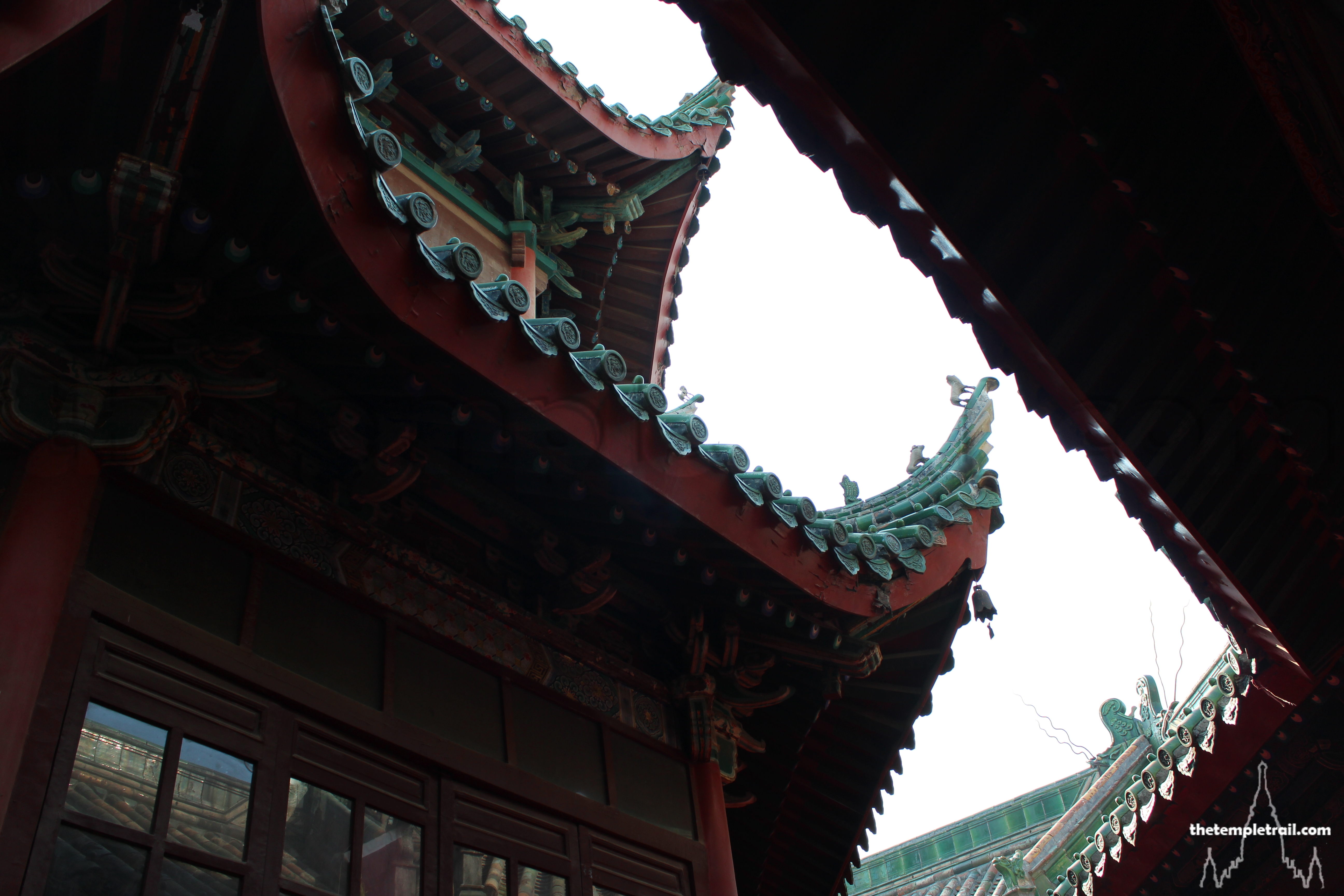The bus full of tourists cruises along the Southern Vietnamese highway. You, along with the others, are being kept entertained by the hilarious antics of the tour guide from Saigon who is leading your journey. Two Hanoian ladies on the bus with no spoken English are the butt of his anti-communist jokes. They are rich party members and the guide is relishing his chance to poke fun at them without them knowing what he is doing. His anecdotes of tourists behaving stupidly and his colourful language keep the tour light-hearted and jovial. A spot is pointed out on the road where a famous photo of a Vietnamese girl suffering the effects of napalm during the war was taken. Before you know it, you have entered into a walled compound that looks a little out of place in the rehabilitated landscape of what was once a war-torn region of the world. Passing schools and accommodation blocks, your coach hisses to a halt by the side of the beautifully manicured road. You get off the bus and look directly ahead of you. In your field of vision is a melting pot of a building. From a distance, one could be forgiven for thinking it was a church, but closer inspection reveals imagery and style that don’t fit into any religious structure you have been to, yet seems to have elements of all of them. This behemoth of an edifice is the Cao Đài Holy See and it is home to the Cao Đàiists; adherents to a religion that is as eclectic as the building that houses it.
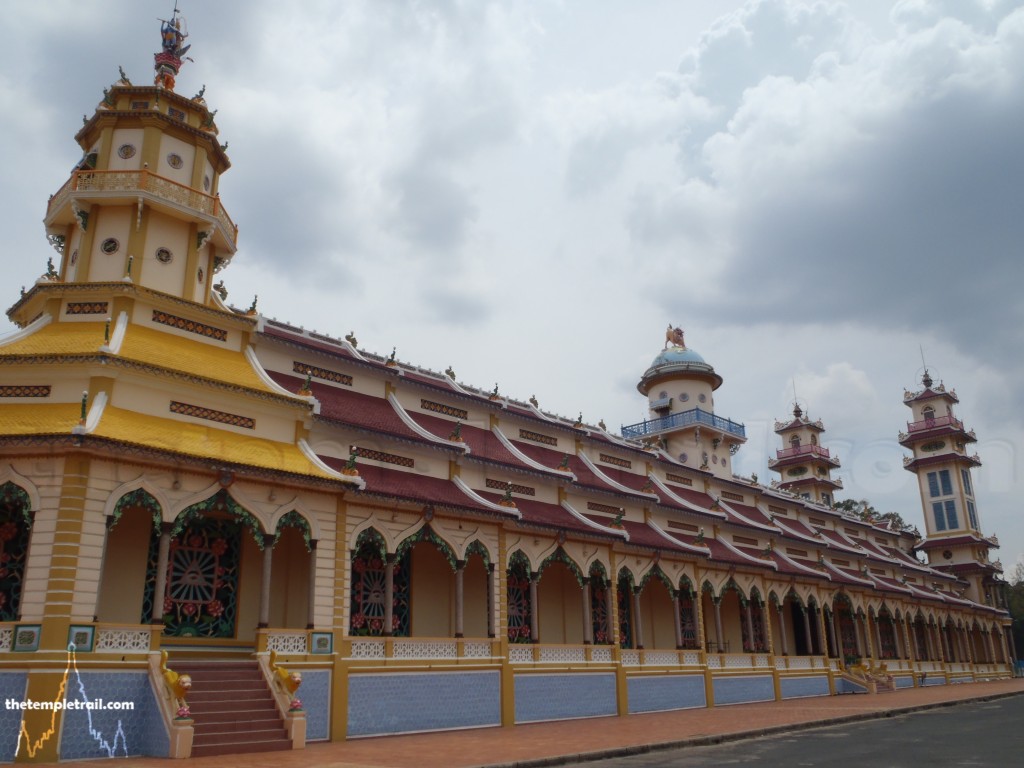
Cao Đàiism was created in Tây Ninh in 1926 by a small group led by Ngo Van Chieu (an administrator of French Indochina) who received communications from God. The Cao Đàiists believe in one god; Cao Đài (high tower) the Ancient Sage and Great Bodhisattva Mahasattva. They combine elements of Christianity, Buddhism, Judaism, Hinduism, Spiritualism, Taoism, Confucianism and Islam. They believe that in the beginning was the Tao and that God was created by the big bang. God then made the yin yang. From the yin and himself, he formed the Mother Buddha to preside over the yin. Cao Đàiists worship both God, who is symbolized as the Divine Eye, and Mother Buddha. They believe that there are 36 levels of heaven and 72 planets. One is the closest to heaven and 72 is the nearest to hell. Earth is number 68 and the lowest being on a planet would not trade places with the king of a lower planet.

Humans can become angels, then saints, then sages and finally Buddhas. They think that we are in the third era of religious amnesty and that each era has its Buddhas and sages. They venerate the Dīpankara Buddha, Fu Xi (a Chinese folk hero), Sakyamuni Buddha (the historical Buddha), Lao Tzu, Confucius, Jesus Christ, Guanyin, Guan Yu, Li Bai (a Chinese poet), Sun Yat Sen, Victor Hugo, Nguyen Binh Khiem (a Vietnamese scholar), Joan of Arc, Mohammed, Pericles and Julius Caesar.
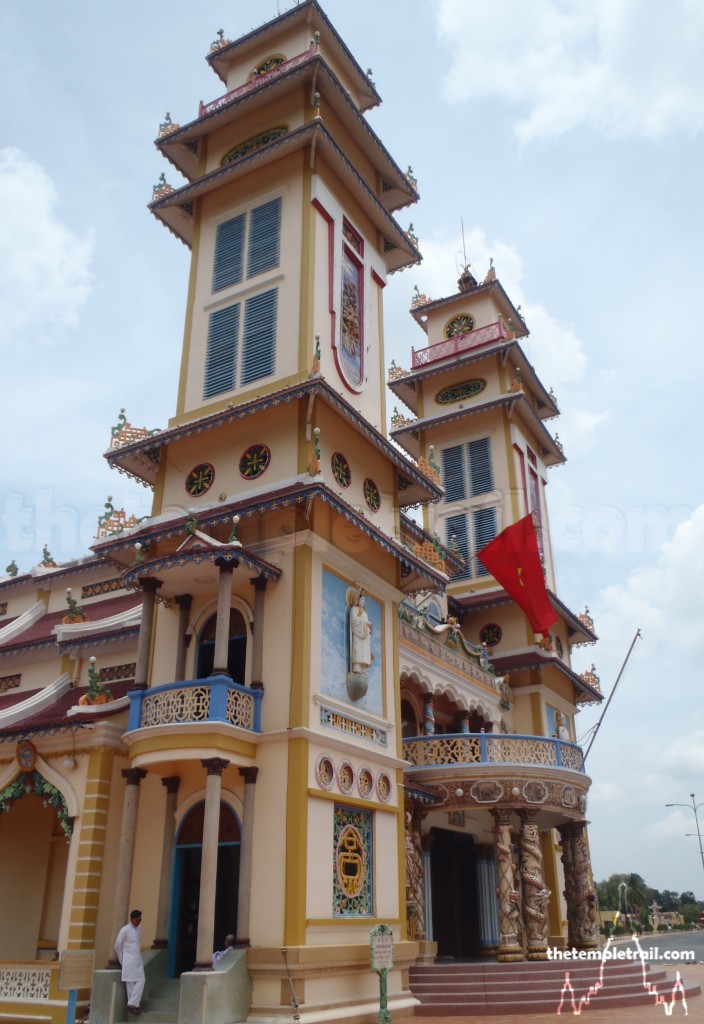
They practice séances, prayer, ancestor worship, nonviolence and vegetarianism. Since their conception, they have been a highly political faith. They participated in political and military action against the French colonial forces, the Diem government of Saigon and the communists. From 1975, they were persecuted by the communist government of Hanoi until they were legally recognized in 1997.
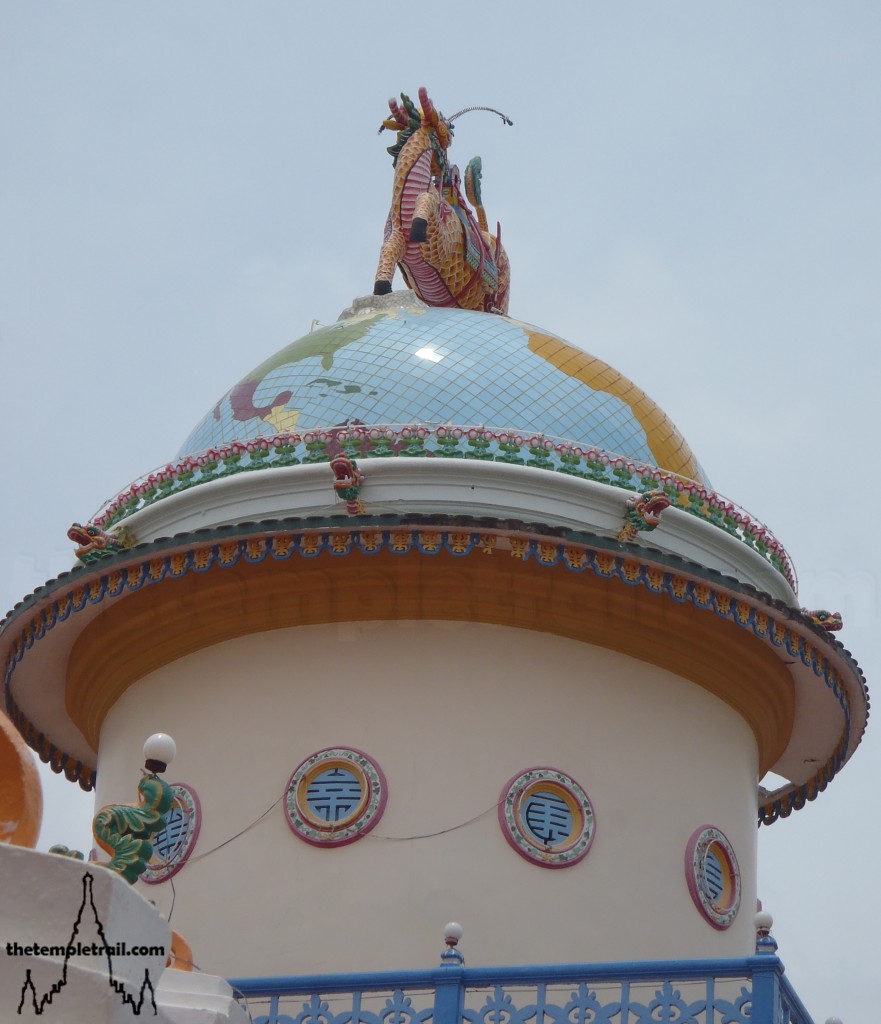
The temple, built in 1933, resembles a church in many respects, but it is brightly coloured and the towers that push out from its roof include one that has a globe on top that is finished with a kỳ lân (a mythical creature called a Qilin in China, also known as a Chinese unicorn). It symbolises good omens and the birth of sages. From the bus to the temple, you are ushered forward by white robed Cao Đàiists who are in no mood for shenanigans. You are hustled through the two Catholic church style towers into the entrance and past a mural of The Three Saints (Sun Yat Sen, Victor Hugo and Nguyen Binh Khiem) signing a pact with God. After making your way upstairs into the main gallery of the temple you stand in silence looking down into the massive open space of the building. In a small enclosure, musicians begin to play as the faithful wander in.

The swathe of lay worshippers and priests enter in strict form. The men sit on the right and the women on the left. The segregated mass is mostly a sea of white, but they are crowned at the top by a few priests in coloured robes. The three main sects of Cao Đài are represented. The Phai Thai (or Buddhists) wear yellow that represents the virtue of love and peace. The second group wear blue; these are the Phai Chuong (Taoists) who uphold peace and freedom. The last group are the Phai Ngoc (Confucians) who wear red to symbolize courage and authority. The congregation are framed by 28 pink columns (denoting the 28 manifestations of Buddha) that are held tightly by black dragons and reach up to the ceiling that is painted like an azure sky. As you wander along the gallery in silence, you see the object of their attention. A huge sphere representing the universe sits on the altar. Emanating from a cluster of clouds on the sphere is the Divine Eye that observes all actions and compels adherents to maintain the correct path. The all-seeing-eye contains a yin yang in its pupil and it is a left eye signifying yang and God (Yin is the right hand side and presided over by Mother Buddha).
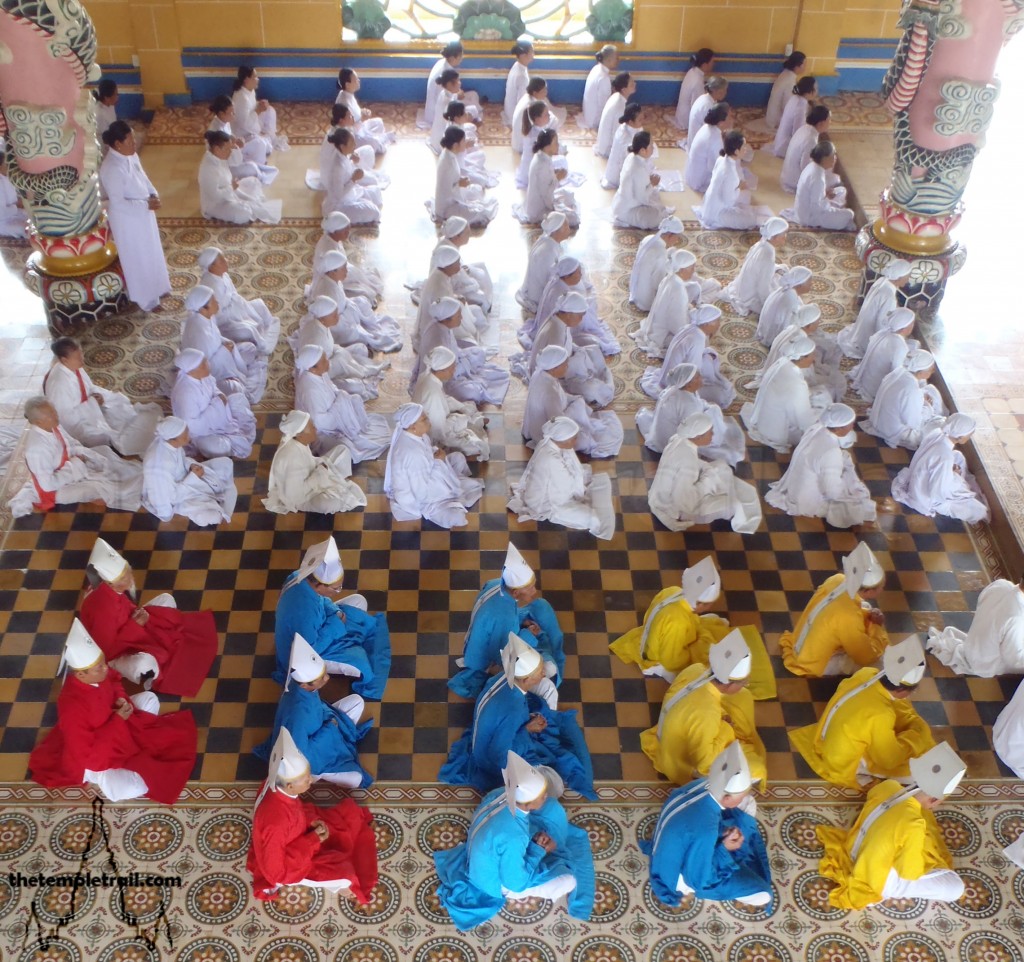
Leaving the worshippers to finish their ritual, you exit the heavily stylized and significant temple. Looking across the main floor where the worshippers sit, you see it has nine levels. The first level starts at the front door and the top level is by the altar. These represent the nine levels of spiritual ascension and the nine divisions of the Cao Đài hierarchy. Numbers are important to Cao Đàiists; they burn five joss sticks to symbolize the five levels of initiation (purity, meditation, wisdom, superior knowledge and freedom from Karma). They make offerings of tea, flowers and alcohol that embody the three constitutive elements of human beings (intelligence, spirit and energy). Passing the relief murals of the important saints of the faith, you stroll around the vicinity of the main building away from the throngs and the groups of tourists who have all come to witness the midday spectacle. The building is huge and the colours are gripping. A sense of peace descends upon your shoulders and you can see the beauty of this fully accepting religion as you walk through the small garden and past a miniature pagoda.
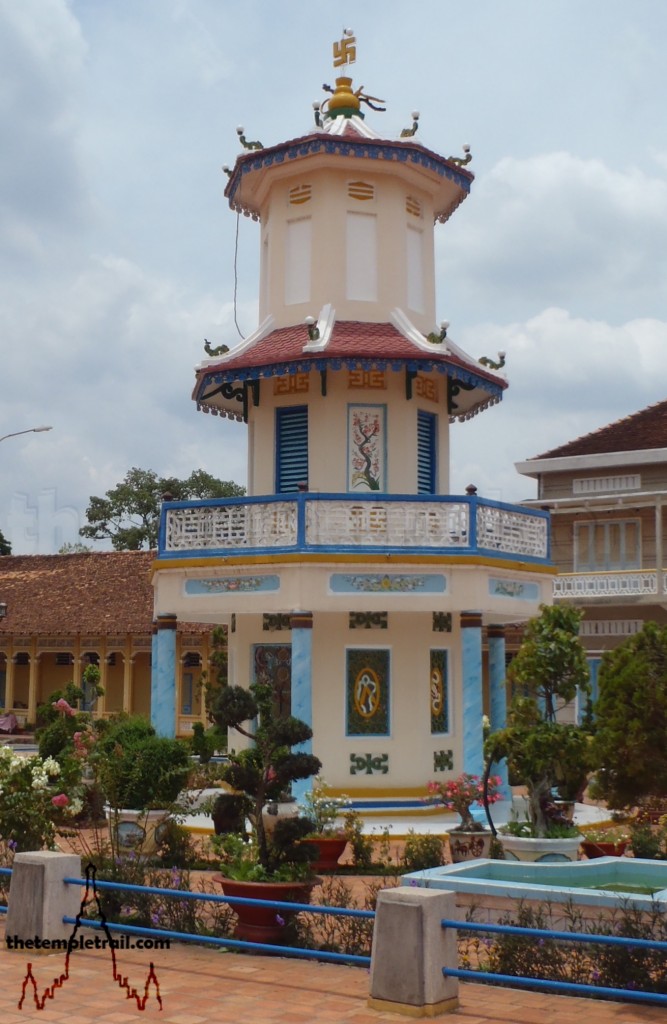
The Cao Đàiists have been demonized for so long; this is their time to consolidate their downtrodden faith. Eventually they may elect their pope and see their dream of a fully united humanity. There is no other religion like it. It preaches a peaceful acceptance of each other’s differences and joining of sides to act as force for good. Here in the heart of Cao Đài headquarters, you feel that in being accepted by the Vietnamese government, they will flourish and be able to continue their non-violent path to enlightenment. Walking back to the bus, you feel at ease and ready to be brought back to reality by your chubby, good-humoured guide and his bawdy stories.
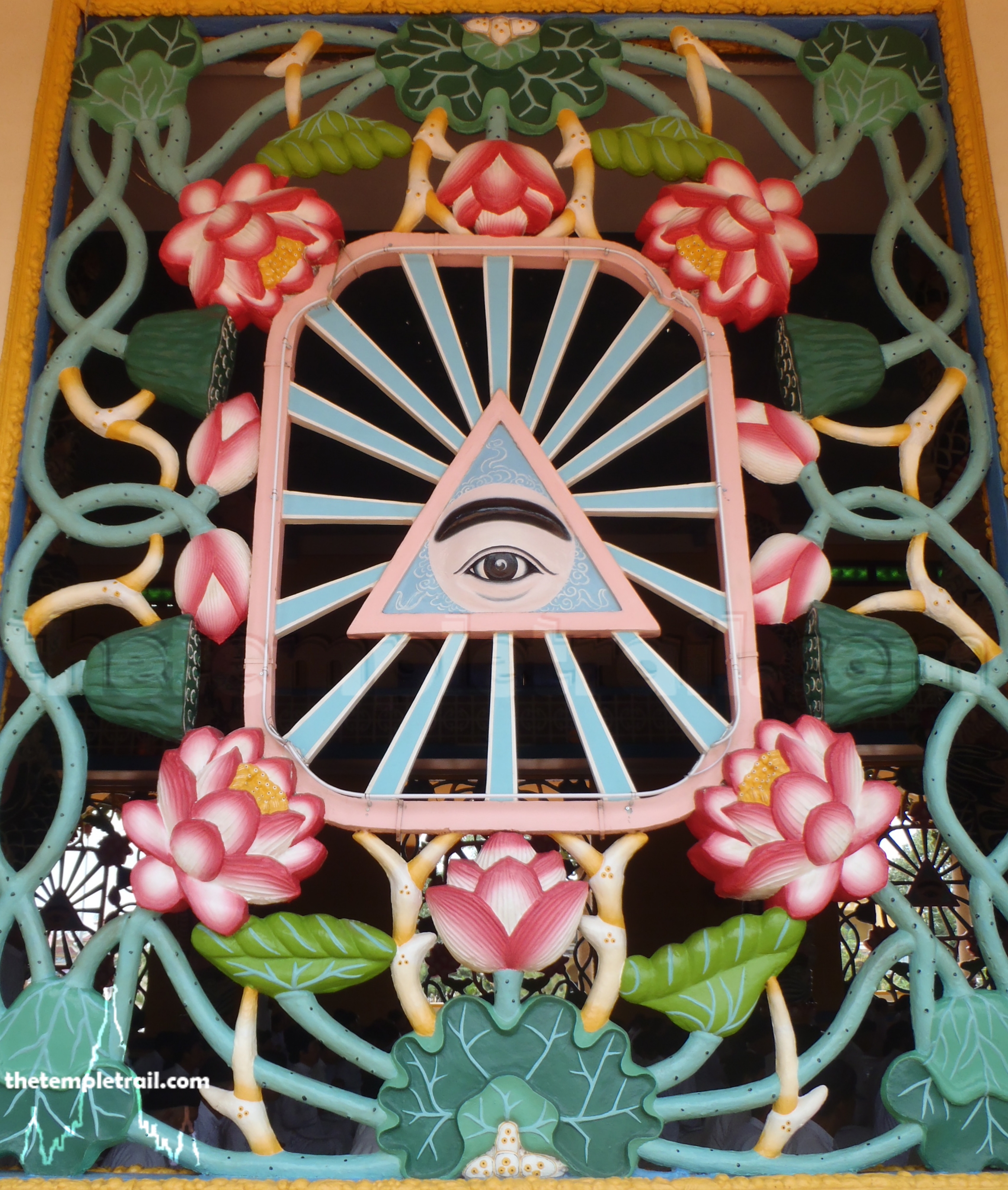
 Huaca Pucllana
Huaca Pucllana